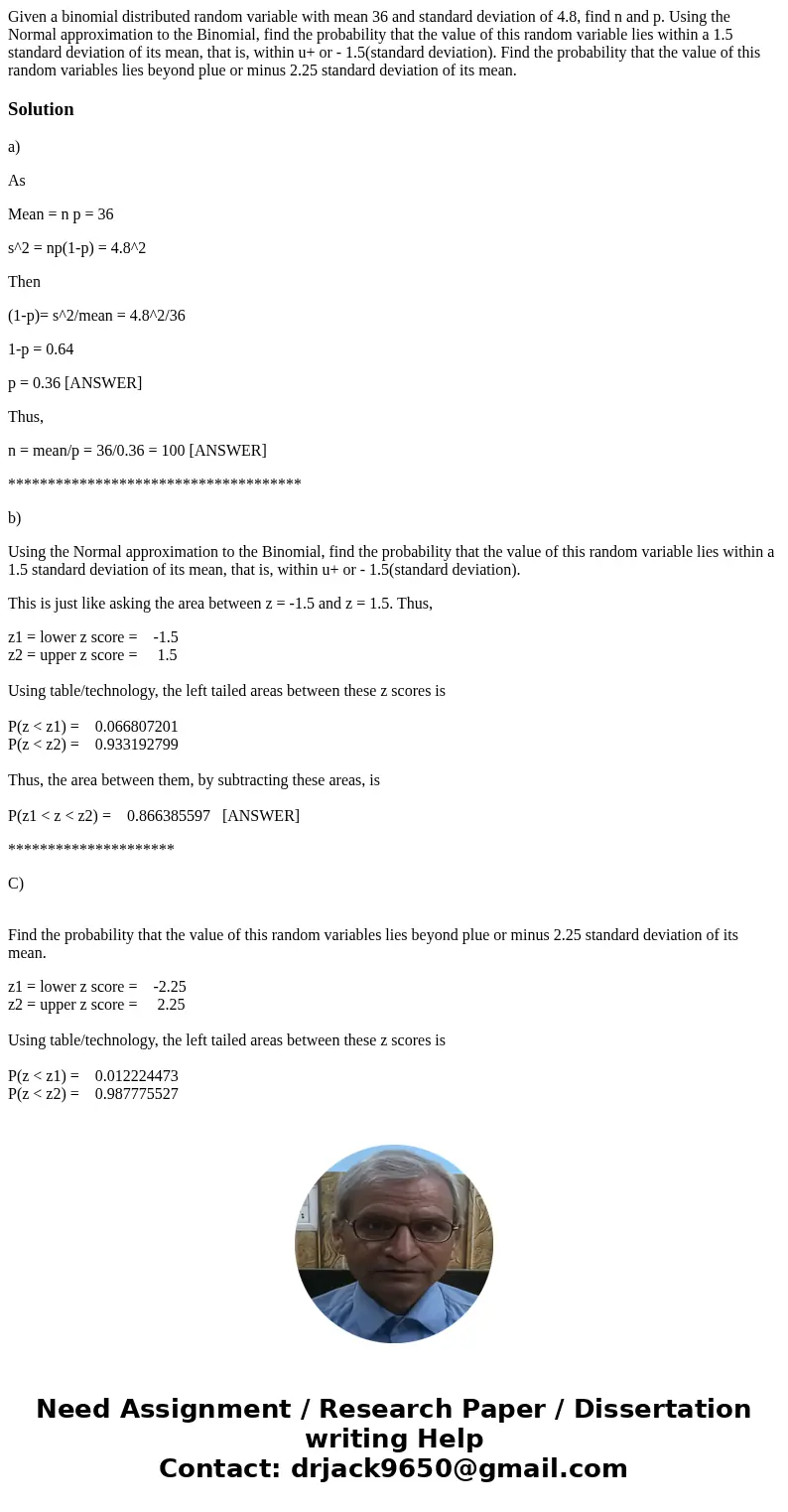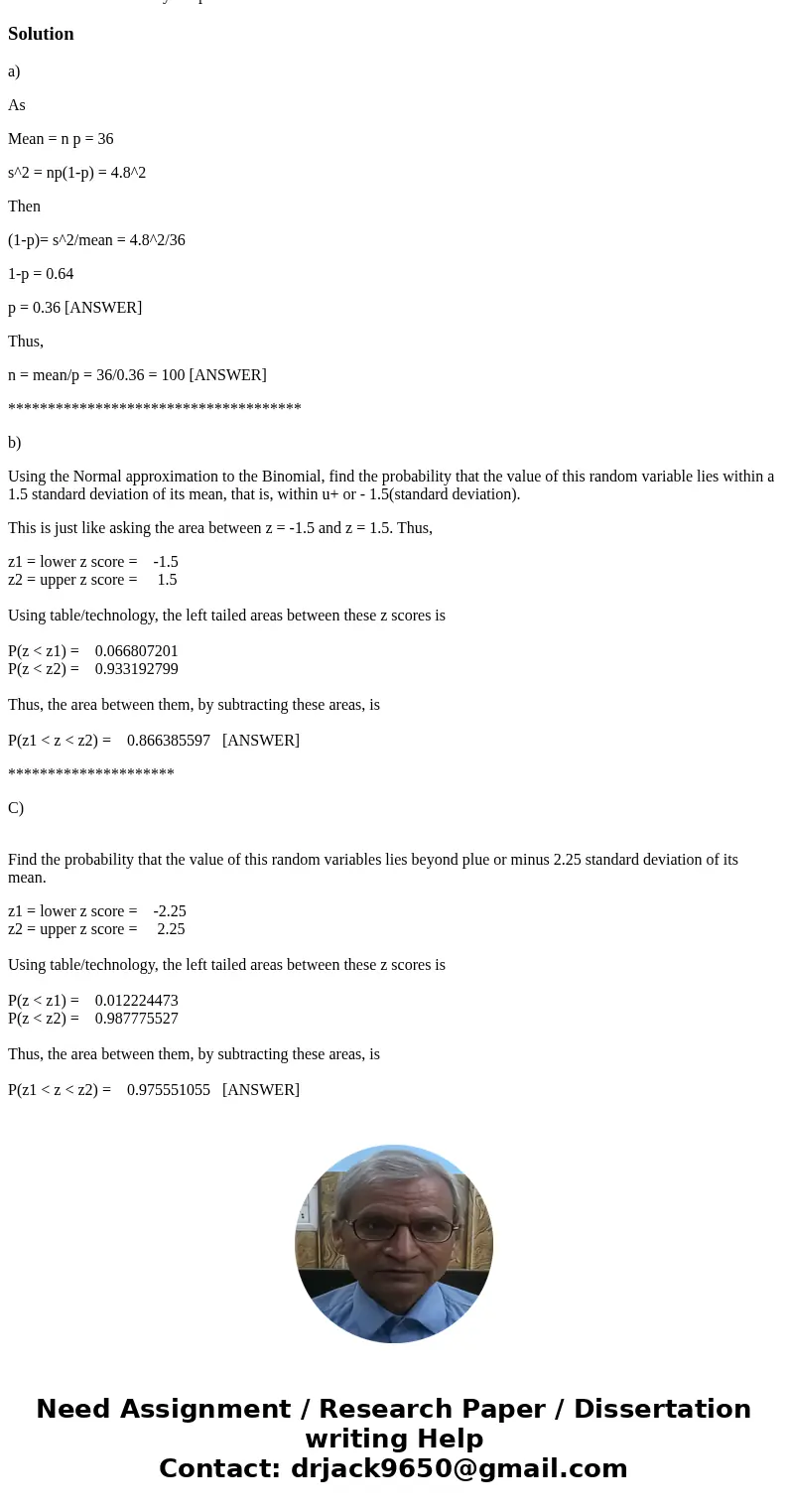Given a binomial distributed random variable with mean 36 an
Given a binomial distributed random variable with mean 36 and standard deviation of 4.8, find n and p. Using the Normal approximation to the Binomial, find the probability that the value of this random variable lies within a 1.5 standard deviation of its mean, that is, within u+ or - 1.5(standard deviation). Find the probability that the value of this random variables lies beyond plue or minus 2.25 standard deviation of its mean.
Solution
a)
As
Mean = n p = 36
s^2 = np(1-p) = 4.8^2
Then
(1-p)= s^2/mean = 4.8^2/36
1-p = 0.64
p = 0.36 [ANSWER]
Thus,
n = mean/p = 36/0.36 = 100 [ANSWER]
*************************************
b)
Using the Normal approximation to the Binomial, find the probability that the value of this random variable lies within a 1.5 standard deviation of its mean, that is, within u+ or - 1.5(standard deviation).
This is just like asking the area between z = -1.5 and z = 1.5. Thus,
z1 = lower z score = -1.5
z2 = upper z score = 1.5
Using table/technology, the left tailed areas between these z scores is
P(z < z1) = 0.066807201
P(z < z2) = 0.933192799
Thus, the area between them, by subtracting these areas, is
P(z1 < z < z2) = 0.866385597 [ANSWER]
*********************
C)
Find the probability that the value of this random variables lies beyond plue or minus 2.25 standard deviation of its mean.
z1 = lower z score = -2.25
z2 = upper z score = 2.25
Using table/technology, the left tailed areas between these z scores is
P(z < z1) = 0.012224473
P(z < z2) = 0.987775527
Thus, the area between them, by subtracting these areas, is
P(z1 < z < z2) = 0.975551055 [ANSWER]


 Homework Sourse
Homework Sourse